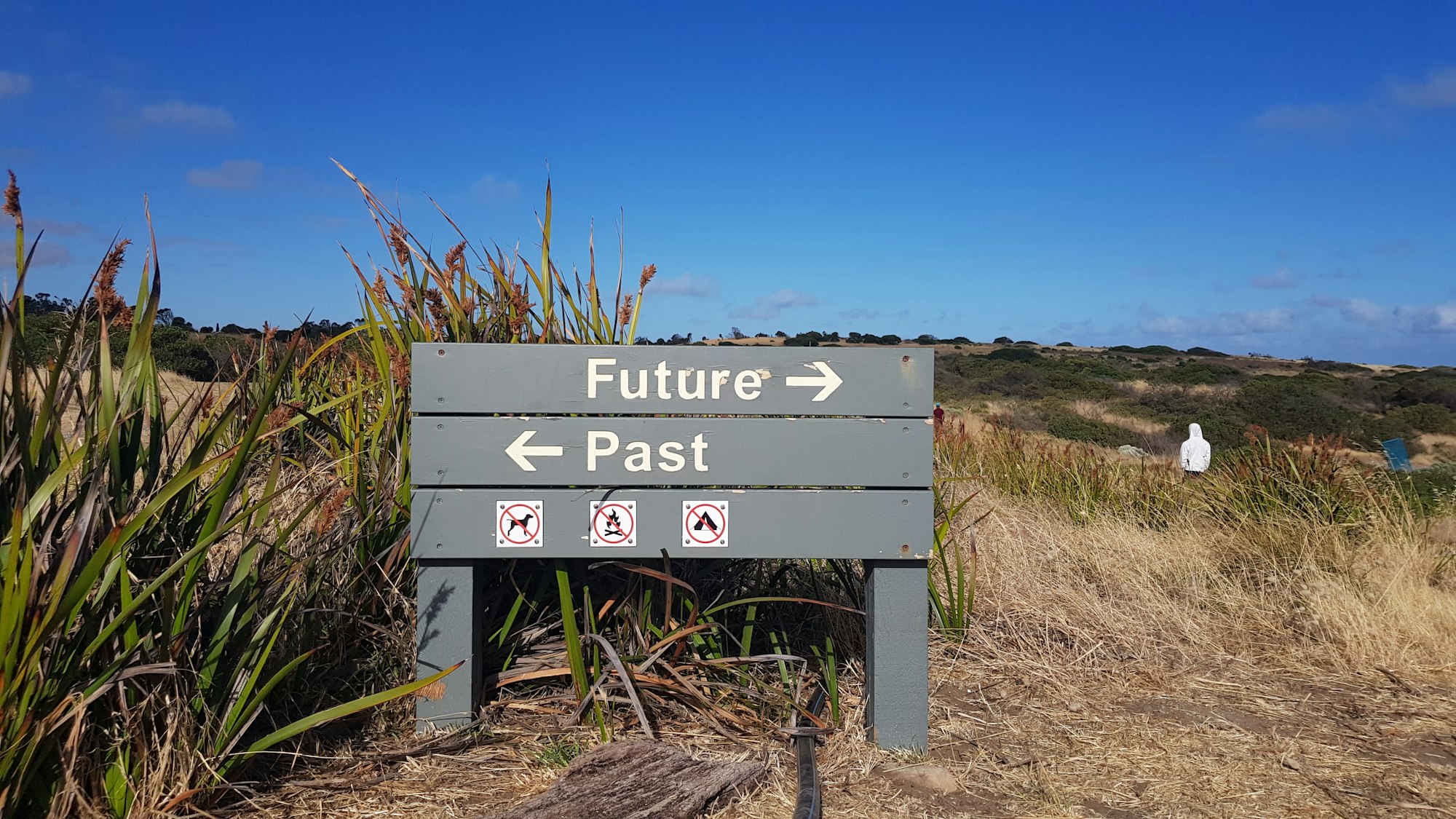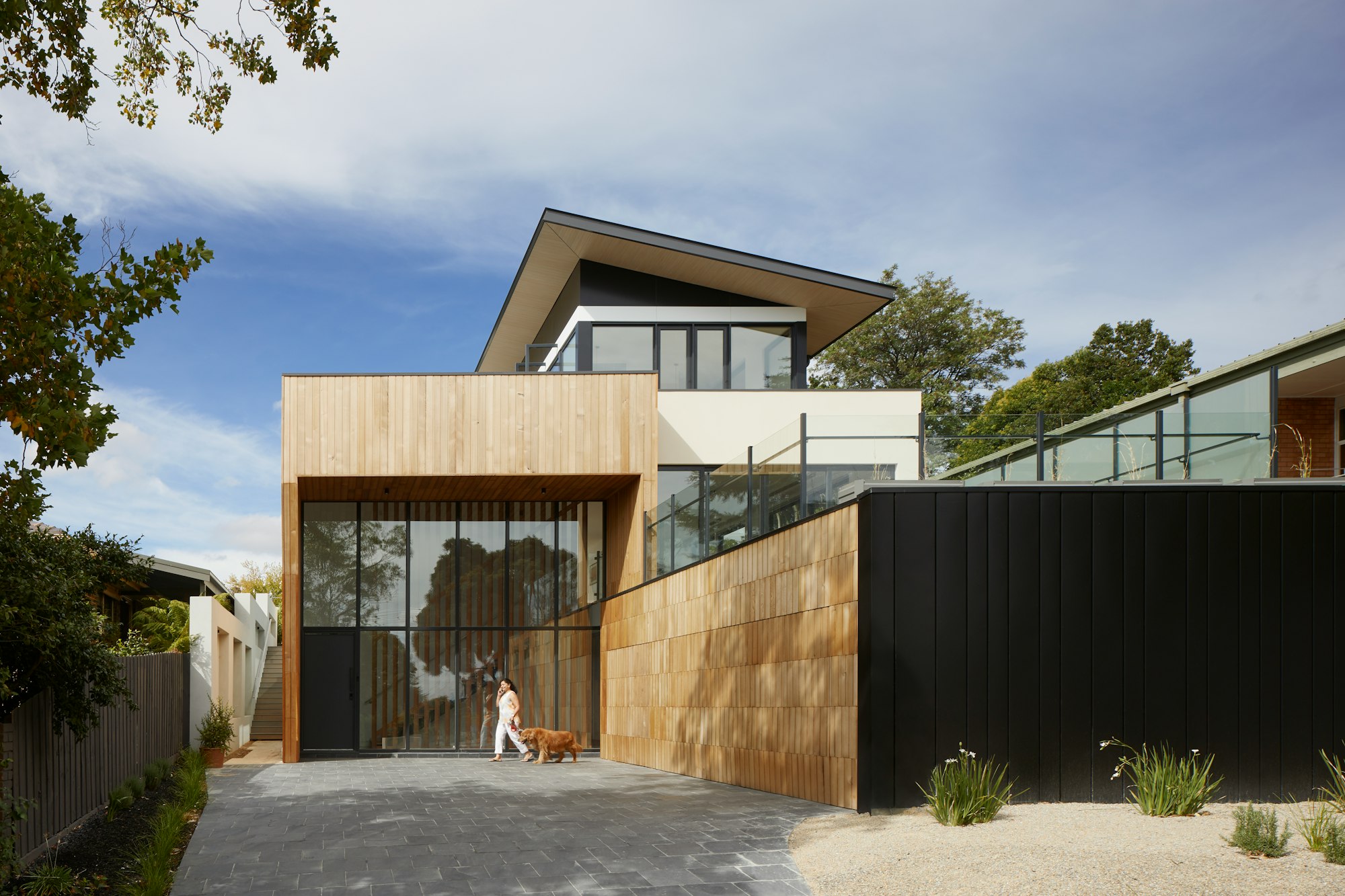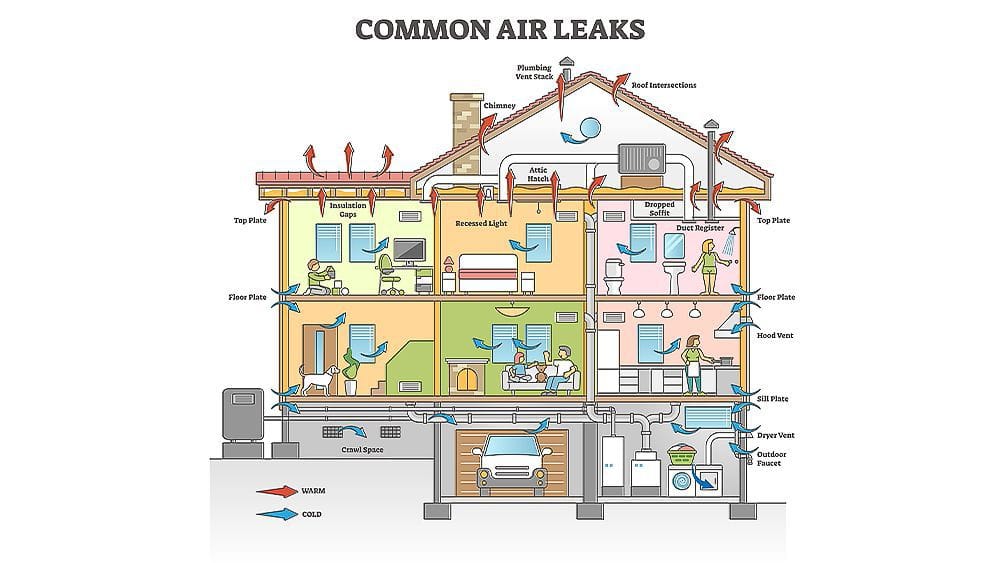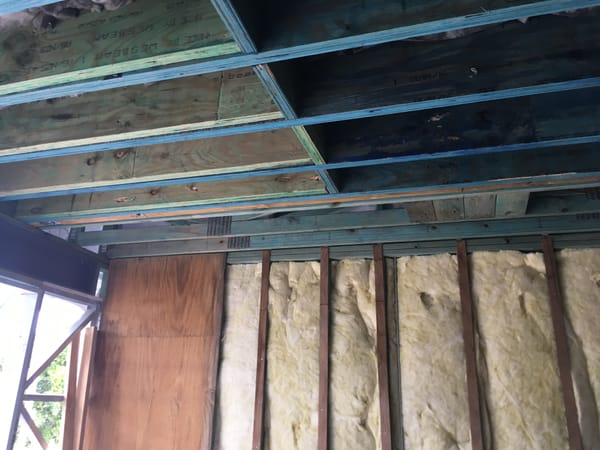Introduction
For decades, the definition of “home” in Australia has meant a free-standing house with a 1/4 or 1/2 or full acre backyard, the classic Great Australian Dream. But times have changed. As cities grow denser, government policies change and housing prices skyrocket, we're being asked to rethink what “home” really means to us.
Enter sustainable apartments. These homes combine smart design, lower energy costs, and healthier living environments.
Whether you’re a buyer, renter, or developer, the shift toward sustainable apartments isn’t just good for the planet—it makes financial sense too.
But while the benefits are clear, issues remain. A mix of outdated policies, industry inertia, and limited consumer awareness is slowing the roll out of greener, more efficient apartment living.
In this article we dig deep into the facts behind sustainable apartments—what they offer, why they matter, and how finance, policy, and design must come together to make them the new normal.
Let’s break it all down and see how these modern, eco-friendly homes can be a game-changer for both homeowners and the environment.
Australia’s Housing Landscape – Now and Into the Future
Australia’s housing mix has shifted dramatically over recent decades.
Once dominated by sprawling detached homes, today’s market is evolving toward a denser, more diverse mix of houses, townhouses, and apartments.
According to the latest data, around 36% of new dwellings approved in 2024 were apartments, flats, townhouses, or terrace houses, a sharp contrast to the traditional suburban model.
This shift isn’t just about style. It’s driven by soaring housing costs, limited land availability, and a growing population. Australia is expected to welcome 3.9 million new residents by 2034, adding substantial pressure on housing demand. Forecasts suggest a need for 1.8 million new households by 2033, including over 560,000 lone-person households, reflecting changing family structures and lifestyle preferences.
Yet, we’re already falling short. Housing Australia predicts a shortfall of over 62,000 apartments and medium-density dwellings between 2022 and 2027. This gap is exacerbated by rising interest rates, fluctuating construction costs, and capacity constraints within the building industry.
Apartments are an increasingly important piece of the puzzle, especially in major cities like Sydney, Melbourne, and Brisbane, where population growth and job creation are concentrated. But apartments aren’t just about squeezing people into smaller spaces—they’re about creating homes that work smarter, not harder.
This shift also has environmental implications. Residential buildings in Australia account for 24% of national electricity use and more than 10% of total carbon emissions, with apartments generating around 18 million tonnes of CO₂-e annually. Much of this comes from shared services like lifts, lighting, and HVAC systems.
Poorly designed apartments can lock in high energy use and costs for decades, making it vital that we get new builds right from the start.
Meanwhile, the mix of apartment residents is diverse. About 65% of apartments are rented, with many occupants speaking a language other than English at home, being younger, and living alone. This diversity underlines the need for apartment design that prioritises inclusivity, accessibility, and long-term livability.
Understanding the Apartment Market – Demand, Supply, and Shortages
Australia’s apartment market is feeling the squeeze. Driven by population growth, a strong job market, and rising incomes, demand for apartments—particularly in capital cities—is surging. But supply just isn’t keeping up.
Between 2025 and 2029, demand for new apartments is projected at 75,000 units per year, while actual delivery is expected to hover around 50,000 units annually. That’s a shortfall of 25,000 units every year, and it’s already starting to bite. Vacancy rates in major cities are forecast to plummet by 2029: Sydney’s could drop from 2.2% to 1.5%, Melbourne’s from 1.8% to 1.4%, and Brisbane’s from 1.5% to 0.9%. This means fewer options and higher rents.
Adding to the challenge, the development pipeline is being squeezed by financing complexities, shifting regulations, and cost pressures in construction. Many developers are locked into speculative, build-to-sell models that prioritise quick profits over long-term quality and sustainability.
The result? A glut of apartments that meet the bare minimum requirements, often with little thought for energy efficiency or climate resilience.
Meanwhile, buyer expectations are rising. Research shows many Australians are willing to pay a premium for energy-efficient, well-designed apartments, especially in high-demand areas. But with supply falling short, competition is fierce—and that premium will only grow.
It’s not just about numbers, though. To meet demand while tackling affordability and sustainability challenges, we need a shift in how apartments are designed, financed, and delivered.
Smart, future-proof apartments can help ease supply pressures while delivering long-term value for residents and communities.
Sustainable Apartments – Features and Benefits
So, what makes an apartment “sustainable,” and why should homeowners and renters care? The answer goes beyond just ticking boxes for environmental compliance.
Sustainable apartments are thoughtfully designed homes that cut energy use, lower costs, improve comfort, and support well-being—while shrinking carbon footprints.
Here’s what sets them apart:
- All-Electric Design: Forget gas bills. All-electric apartments use modern technologies—like heat pumps for water heating, induction cooktops, and efficient reverse-cycle air conditioning—to deliver comfort without the carbon.
- Energy Efficiency: High-performance insulation, glazing, and ventilation slash energy usage. Studies show that sustainable apartments can save up to $850 a year on energy bills, a welcome relief in today’s cost-of-living squeeze.
- Water-Saving Fixtures: Smart water systems can reduce consumption by up to $463 per year, a win for both the environment and the wallet.
- Healthier Indoor Environments: With natural ventilation, daylight-filled spaces, and low-VOC paints, these homes improve air quality, reduce asthma risk, and create a healthier space for residents.
- Resilience to Climate Stresses: Thoughtful design helps apartments withstand heatwaves, storms, and other climate extremes. Landscaping can cool streetscapes by up to 5°C, providing relief from urban heat islands.
- Community and Livability: Sustainable apartments often incorporate communal spaces, EV charging infrastructure, and social connections, fostering a sense of belonging.
- Higher Value and Long-Term Savings: A Green Star-certified apartment isn’t just good for the planet—it’s a smart investment. Analysis shows financial benefits of over $111,000 over 30 years, combining energy savings, green loan repayment advantages, and potential property value appreciation.
The payoff is clear: sustainable apartments deliver year-round comfort, lower running costs, better health outcomes, and a future-proof home. They’re designed to be good for residents, investors, and the planet alike.



Barriers to Sustainable Apartments – Why Progress is Slow
With all the clear benefits, you might wonder: why aren’t sustainable apartments the norm? The answer lies in a tangled web of financial pressures, outdated practices, and limited consumer awareness.
Here’s what’s holding things back:
- Speculative Development Models: Most apartments in Australia are built-to-sell, with developers prioritising quick profits. This approach discourages long-term investment in sustainability features that might cost more upfront but deliver bigger savings and comfort in the long run.
- Pre-Sales and Investor Priorities: Developers often rely on pre-sales to secure finance, with many apartments sold to investors focused on short-term gains. This dynamic means buyers typically have little say in design choices, and sustainability features are often viewed as expendable extras.
- Strata Ownership Complexity: Apartments are commonly jointly owned and managed through strata schemes. This structure can make retrofitting for energy efficiency challenging, as consensus is needed for upgrades that affect shared areas or base building systems.
- Profit-Driven Feasibility: During design, developers often prioritise immediate profitability over long-term sustainability. If costs need trimming, energy efficiency measures are often the first to go.
- Boom-Bust Cycles: Market volatility discourages innovation. When the industry is uncertain, developers stick to familiar models rather than experimenting with sustainable design.
- Industry Resistance and Policy Inertia: Research shows that the sluggish uptake of sustainable apartments isn’t just about consumer demand—it’s about industry reluctance to change and governments slow to push for higher standards. Without clear policy leadership and financial incentives, change is incremental at best.
- Knowledge Gaps: Many buyers assume apartments aren’t eligible for green home loans or think sustainability features are limited to freestanding homes. This misconception limits demand and discourages developers from pursuing greener designs.
While these barriers are significant, they’re not insurmountable. It’s a matter of aligning market forces, regulatory frameworks, and consumer expectations to make sustainable apartments the new default.
What Buyers and Renters Want – Insights from Research
The message from Australian buyers and renters is loud and clear: sustainability is no longer a nice-to-have—it’s a must-have. Research paints a picture of a market hungry for apartments that offer comfort, cost savings, and a lighter environmental footprint.

Here’s what the data shows:
- Strong Demand for Sustainable Features: A whopping 81% of buyers consider sustainability features “critical” or “important” in their decision-making. Renters are just as enthusiastic, with many prioritising energy efficiency in their housing choices.
- Willingness to Pay More: Apartments with verified energy efficiency command premiums. In 2024, Domain’s research revealed an 11.7% price premium for energy-efficient apartments compared to standard units. In high-demand areas like Sydney and Melbourne, the premium can be even higher.
- Energy Ratings Drive Decisions: Energy Efficiency Ratings (EERs) have a proven track record of influencing property decisions. In Canberra—Australia’s only city requiring EER disclosure—apartments with higher EERs sold for between 20% to 45% more than their lower-rated counterparts.
- Younger Buyers Are Leading the Charge: Younger home seekers (18–34) are more concerned about their environmental impact, while older buyers focus more on reducing energy costs. Either way, both groups see sustainability as a major plus.
- Top Features Buyers Want: Solar power, efficient lighting, energy-efficient appliances, draught proofing, insulation, and advanced glazing are all on buyers’ wish lists. These aren’t just buzzwords—they’re key to lower energy bills and greater comfort.
- A Green Apartment Sells Faster: While the premium is clear, there’s also a time advantage. Energy-efficient homes attract more listing views and, in many cases, sell faster than standard properties. This means sustainability isn’t just an ethical choice—it’s a competitive edge.
The bottom line? Buyers and renters are ready for sustainable apartments.
The challenge is making sure developers, financiers, and policymakers are ready to deliver them.
Green Star Certification – A Benchmark for Quality
If you’re wondering how to tell whether an apartment is truly sustainable, Green Star certification is your answer. Developed by the Green Building Council of Australia, Green Star sets the gold standard for healthy, energy-efficient, and climate-resilient buildings.
So, what makes it special?
- Rigorous Standards: Green Star certification covers not just energy use but also water efficiency, materials, health, indoor air quality, and community connections. It’s a holistic rating system that looks at the big picture.
- The Green Star Apartments Pathway: Launched in February 2025, this pathway tailors the certification process to apartments, offering independent verification for each unit. This means buyers can have confidence that their specific apartment meets high standards for sustainability.
- Cost vs. Value: Achieving a Green Star rating adds an estimated 1.3% to the overall project cost—a modest investment that delivers big returns. Over 30 years, a two-bedroom Green Star apartment in Sydney could generate over $111,000 in combined savings from energy costs, green home loan repayments, and higher resale value.
- Market Confidence: Green Star certification isn’t just a badge of honour; it provides third-party verification that an apartment meets strict sustainability criteria. This boosts market confidence for both buyers and financiers.
- Case Studies that Prove the Point: Projects like Merri Northcote in Melbourne and The Elements by Kinleaf in Perth showcase how Green Star certification adds real-world value, from energy savings to healthier living spaces and increased property appeal.
- Future-Proof Investments: As regulations tighten and buyers become more discerning, Green Star-certified apartments are positioned to retain value, stay competitive, and deliver long-term financial and environmental benefits.
Green Star certification isn’t just a tick-the-box exercise—it’s a commitment to quality, comfort, and sustainability that resonates with buyers, renters, developers, and investors alike.
Green Finance – Unlocking Affordability for Sustainable Apartments
Even the best-designed sustainable apartment needs the right financial support to make it a reality. This is where green finance steps in, offering an essential bridge between eco-conscious design and homeowner affordability.
Here’s the current landscape:
- A Missing Link for Apartments: While many lenders offer green home loans for standalone houses, there’s a glaring gap when it comes to apartments. Gateway Bank’s 2024 survey revealed a significant lack of awareness about green loans for apartments, despite strong consumer interest.
- Demand is There, But Knowledge is Low: Over 74.5% of apartment buyers would consider a green loan if it made sense financially. However, most potential buyers weren’t clear on the eligibility criteria, assuming green loans were only available for houses with obvious features like solar panels.
- Financial Perks Drive Adoption: Buyers are motivated primarily by cost savings. Lower interest rates, reduced deposits, and higher loan limits linked to energy-efficient certifications can significantly lower barriers to apartment ownership. Gateway Bank’s analysis shows a $40,000 saving in loan repayments over 30 years for a Green Star apartment, on top of energy bill reductions.
- The Power of Third-Party Verification: Green Star certification plays a key role in enabling green finance. By verifying a property’s sustainability, it gives banks and lenders confidence to offer competitive loan products. This reduces risk for financial institutions while giving buyers clear cost benefits.
- Bridging the Knowledge Gap: To truly unlock the potential of green finance, lenders and developers need to work together. They must raise awareness, simplify eligibility criteria, and showcase the long-term financial gains of green apartments.
Green finance isn’t just an environmental initiative—it’s a strategic financial tool.
With the right structures in place, it can drive the market toward more sustainable, affordable, and liveable apartment communities.
Build-to-Rent – A Pathway to Sustainability Leadership
While most apartments in Australia are built-to-sell, there’s an emerging model that’s shaking things up: build-to-rent (BTR).
Unlike traditional developments, BTR projects are designed to be owned and professionally managed by a single entity for the long term—often 15 years or more.
Here’s why that matters:
- Long-Term Thinking, Better Outcomes: When developers and investors plan to hold onto an asset for decades, sustainability becomes a smart business decision. High-quality construction, energy-efficient systems, and durable materials deliver lower operating costs, higher tenant satisfaction, and long-term asset value.
- Leading the Green Charge: BTR projects already account for 17% of Green Star apartment registrations in Australia, far outpacing their market share. Major players like Sentinel Australia’s The Elements by Kinleaf and AXA IM Alts’ Farmhouse Road Westmead show how BTR can set new benchmarks for sustainability.
- Tenant Appeal: With younger, climate-conscious renters seeking greener living spaces, BTR developments that offer features like rooftop solar, EV charging, quality insulation, and efficient appliances attract high occupancy rates. This supports both sustainability goals and financial performance.
- Global Comparisons: While BTR currently makes up just 0.6% of Australia’s rental market, it represents 2.8% in the UK and 14% in the US. There’s room to grow, and sustainability is a key lever to differentiate and expand this model locally.
- A Win-Win Model: For investors, BTR delivers stable income streams and long-term asset appreciation. For renters, it offers high-quality, well-managed homes with lower energy costs and a better living experience. And for the planet, it means lower carbon footprints and greener communities.


🏁 Conclusion
Most of us aren’t dreaming of small/shoe box sized, cold apartments in winter, increasing energy bills, or confusing strata meetings about retrofits ten years too late.
Sustainable apartments are a better way forward than how we’ve done things in the past. They’re about living more comfortably, cutting down on bills, and being part of a smarter, more resilient future. (And let’s be honest—were we really being smart before? Not so sure about that.
Developers need to build better. Banks need to finance smarter. Governments need to stop dragging their feet. And we, as buyers and renters, need to start asking better questions.
Because once we stop settling for the bare minimum—and start demanding homes that are actually designed to be liveable (healthy, seasonally comfortable) and last—everyone wins. Your wallet. And yes, even your future self, who won’t be cursing poor ventilation during the next heatwave.
So next time you see a slick apartment ad? Ask about its energy rating. Ask if it’s Green Star certified, ask about the building envelope, thermass mass, orientation, ventillation and livability.
Ask if your bank offers a green loan. Because when more of us start asking, the industry has to start answering.
Frequently Asked Questions (FAQ's)
1. What is a sustainable apartment?
A sustainable apartment is designed and built to reduce environmental impact, improve energy and water efficiency, provide healthier indoor environments, and enhance comfort and resilience. It typically includes features like high-performance insulation, all-electric design, efficient appliances, and renewable energy systems.
2. How does Green Star certification work for apartments?
Green Star, developed by the Green Building Council of Australia, rates buildings based on environmental performance, resource efficiency, and community impact. The Green Star Buildings – Apartments Pathway allows individual apartments to be certified, giving buyers confidence in sustainability and quality.
3. Can I get a green home loan for an apartment?
Yes. While awareness is still low, lenders like Gateway Bank are offering green loans for apartments with verified sustainability features (e.g., Green Star certification). These loans often come with benefits like lower interest rates or reduced fees.
4. How do energy efficiency ratings affect apartment prices?
Energy-efficient apartments command higher prices—up to 11.7% more than standard units—because they offer lower running costs and greater comfort. In places like Canberra, properties with higher EERs sell for up to 45% more.
5. What makes build-to-rent different from build-to-sell?
Build-to-rent developments are owned and managed by a single entity for the long term. This model encourages investment in high-quality, sustainable design and operations since owners benefit from reduced operating costs and high tenant satisfaction over time.
6. Are sustainable apartments more expensive to buy?
They may cost slightly more upfront—about 1.3% extra for Green Star certification—but the long-term savings on energy bills, maintenance, and potential resale value more than make up for the initial investment.
7. How will upcoming policies affect new apartments?
Australia is moving towards stronger energy standards, with a national Home Energy Ratings Disclosure Framework and higher NatHERS requirements. These changes will increase the market value of energy-efficient apartments and improve transparency for buyers and renters.
8. Can renters benefit from sustainable apartment features?
Absolutely. Renters enjoy lower energy bills, better air quality, and greater comfort in sustainable apartments. Features like EV chargers, efficient appliances, and improved insulation are appealing to tenants seeking greener living spaces.
9. Are there government incentives for sustainable apartments?
Yes. Some state programs, like Victoria’s Gas Substitution Roadmap and NSW’s Home Energy Saver program, provide financial incentives for energy efficiency upgrades. Federal initiatives are expanding to support residential energy disclosure and green finance.
10. How can I find out the energy rating of an apartment I’m considering?
Look for third-party certifications like Green Star or NatHERS ratings. Ask developers or agents for documentation showing energy efficiency performance. With upcoming policy changes, this information should become easier to access for buyers and renters.
Further Reading






















